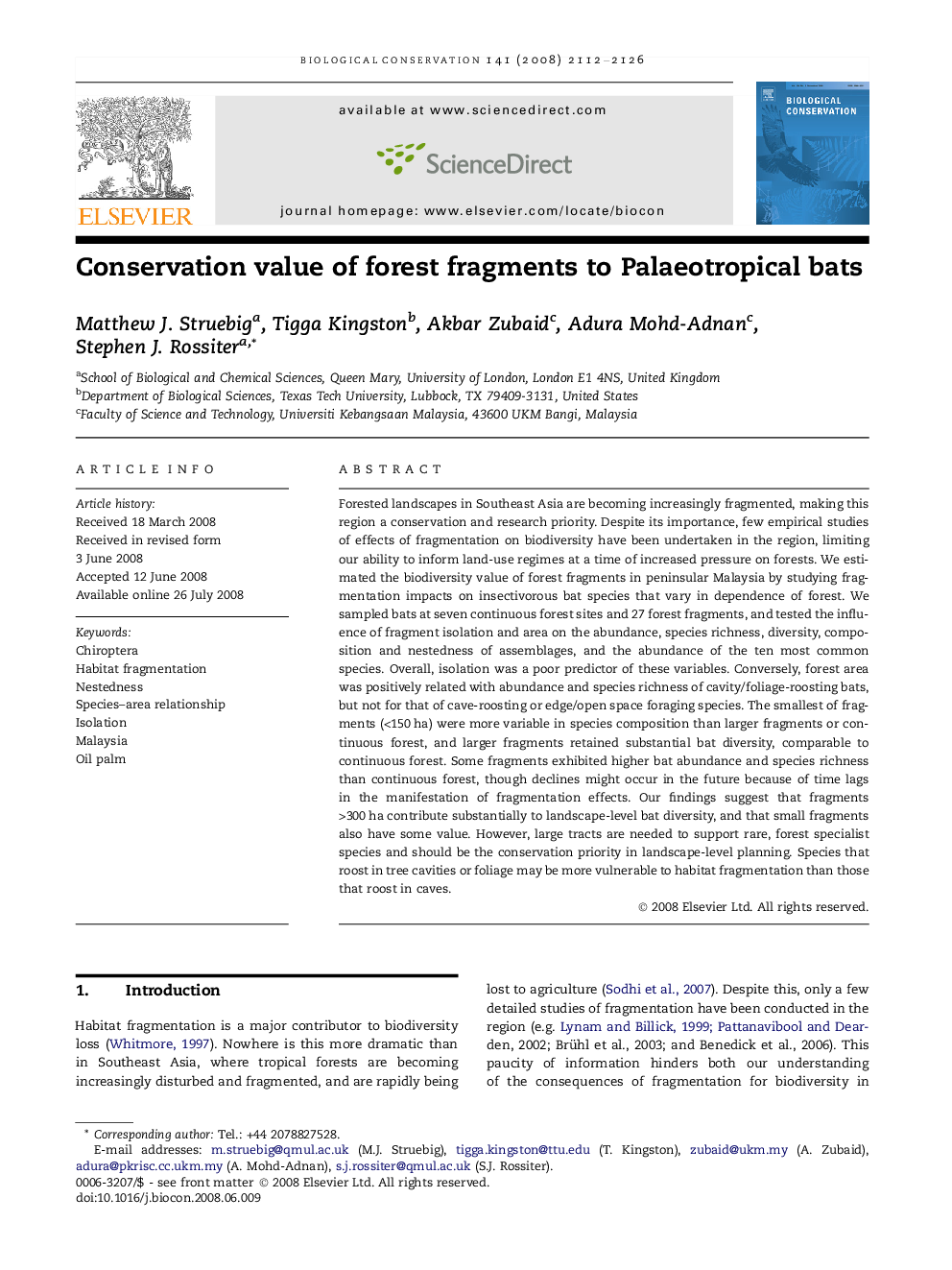| کد مقاله | کد نشریه | سال انتشار | مقاله انگلیسی | نسخه تمام متن |
|---|---|---|---|---|
| 4386793 | 1304578 | 2008 | 15 صفحه PDF | دانلود رایگان |

Forested landscapes in Southeast Asia are becoming increasingly fragmented, making this region a conservation and research priority. Despite its importance, few empirical studies of effects of fragmentation on biodiversity have been undertaken in the region, limiting our ability to inform land-use regimes at a time of increased pressure on forests. We estimated the biodiversity value of forest fragments in peninsular Malaysia by studying fragmentation impacts on insectivorous bat species that vary in dependence of forest. We sampled bats at seven continuous forest sites and 27 forest fragments, and tested the influence of fragment isolation and area on the abundance, species richness, diversity, composition and nestedness of assemblages, and the abundance of the ten most common species. Overall, isolation was a poor predictor of these variables. Conversely, forest area was positively related with abundance and species richness of cavity/foliage-roosting bats, but not for that of cave-roosting or edge/open space foraging species. The smallest of fragments (<150 ha) were more variable in species composition than larger fragments or continuous forest, and larger fragments retained substantial bat diversity, comparable to continuous forest. Some fragments exhibited higher bat abundance and species richness than continuous forest, though declines might occur in the future because of time lags in the manifestation of fragmentation effects. Our findings suggest that fragments >300 ha contribute substantially to landscape-level bat diversity, and that small fragments also have some value. However, large tracts are needed to support rare, forest specialist species and should be the conservation priority in landscape-level planning. Species that roost in tree cavities or foliage may be more vulnerable to habitat fragmentation than those that roost in caves.
Journal: Biological Conservation - Volume 141, Issue 8, August 2008, Pages 2112–2126